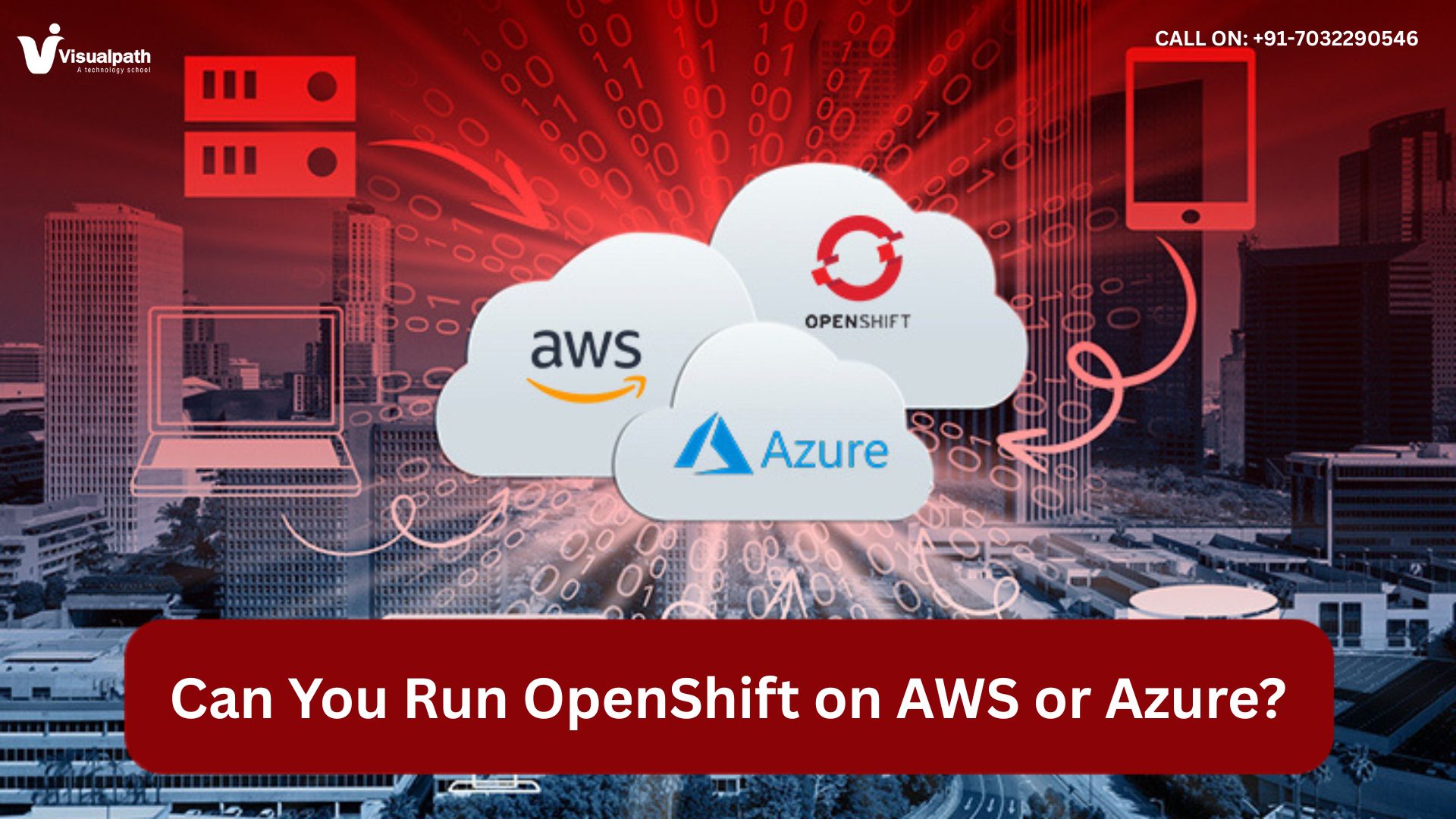OpenShift is a powerful, enterprise-ready Kubernetes platform that enables developers to build, deploy, and scale applications with ease. It’s widely recognized for its flexibility, strong security model, and seamless integration with cloud environments. As enterprises shift toward hybrid and multi-cloud strategies, a common question arises: Can OpenShift run on major public cloud platforms like AWS and Azure? The short answer is yes—and this article explores how it works and why it’s becoming a game-changer in the cloud-native world. Whether you’re a developer, engineer, or looking to upskill through OpenShift Training, understanding this integration is crucial.
Running OpenShift on AWS
Amazon Web Services (AWS) offers a scalable and reliable infrastructure that’s perfectly suited for running OpenShift. Red Hat provides a solution called Red Hat OpenShift Service on AWS (ROSA), which is a fully managed OpenShift experience directly integrated into the AWS ecosystem.
ROSA allows developers to run containerized applications while taking advantage of AWS-native services such as Amazon RDS, S3, and CloudWatch. The integration offers automated cluster provisioning, security, compliance, and scalability—all without needing to manage the control plane. This makes AWS a great choice for organizations looking to simplify container orchestration with enterprise-grade support.
From a cost perspective, using OpenShift on AWS can be optimized by leveraging pay-as-you-go models and reserved instances for long-term projects. It supports both infrastructure and application scaling, which is particularly useful for development teams managing microservices or high-traffic applications.
For those considering an OpenShift Course Online, learning how OpenShift integrates with AWS is an essential skill that can boost your cloud engineering capabilities.
Deploying OpenShift on Microsoft Azure
Microsoft Azure also offers seamless support for OpenShift through a native service called Azure Red Hat OpenShift (ARO). This is a fully managed offering co-developed by Microsoft and Red Hat. ARO is integrated into the Azure portal, billing system, and ecosystem—making it a natural fit for organizations already using Microsoft cloud services.
Azure Red Hat OpenShift provides a secure and compliant platform to run production workloads, complete with built-in monitoring, autoscaling, and security policies. With ARO, you don’t have to manage the Kubernetes control plane, upgrades, or patching. All of this is handled by Red Hat and Microsoft, freeing your teams to focus on building applications instead of infrastructure.
One major advantage of deploying OpenShift on Azure is the access to Azure Active Directory for identity and access management, along with integration into Azure DevOps for CI/CD pipelines. This helps create a robust and secure DevOps workflow that can be easily adopted by teams of any size.
As enterprises increasingly look toward cloud-agnostic solutions, having skills in deploying OpenShift across multiple cloud providers is a valuable asset. For professionals aiming for an OpenShift Certification Course in India, understanding Azure deployment is often included in the syllabus due to its growing relevance.
Which Cloud Should You Choose?
Choosing between AWS and Azure depends on several factors such as existing cloud infrastructure, pricing, and preferred development tools. If your organization is already using AWS services extensively, ROSA may be a better fit. On the other hand, Azure’s deep integration with Microsoft tools like Azure DevOps and Active Directory makes ARO attractive to companies in the Microsoft ecosystem.
Regardless of the provider, OpenShift maintains a consistent developer and operations experience. This means you can build once and deploy anywhere—whether it’s on-premise, AWS, Azure, or even Google Cloud. This flexibility is one of OpenShift’s strongest selling points, especially for businesses that prioritize portability and disaster recovery.
Conclusion
So, can you run OpenShift on AWS or Azure? Absolutely. In fact, both platforms not only support OpenShift but offer managed services designed to enhance and simplify the deployment and operation of OpenShift clusters. As cloud-native development continues to evolve, knowing how to leverage OpenShift in different cloud environments can set you apart in a competitive tech landscape. Whether you’re scaling enterprise applications or just getting started with containers, OpenShift’s cloud compatibility makes it a future-proof solution worth investing in.
TRENDING COURSES: AWS AI, AWS DATA ENGINEERING, CYPRESS.




